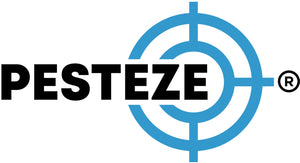HOW TO PREVENT MICE FROM DAMAGING INSULATION

HOW TO PREVENT MICE FROM DAMAGING INSULATION
SUMMARY
Mice are notorious for chewing through insulation, causing structural damage and reducing energy efficiency. Preventing them from invading your home requires a combination of sealing access points, using repellents, and maintaining a clean environment. This guide provides effective strategies to keep mice away and protect your insulation from costly damage.
FEATURES
- Sealing Entry Points: Close gaps in walls, floors, and foundations with steel wool and caulk.
- Natural Repellents: Use peppermint oil, cloves, or ammonia to deter mice from nesting.
- Proper Storage: Keep food sealed in airtight containers to remove attractants.
- Regular Inspections: Check insulation for signs of gnawing or droppings.
- Traps & Baiting: Set up traps along known rodent pathways for immediate control.
- Decluttering & Maintenance: Keep attics, basements, and crawl spaces tidy to minimize hiding spots.
DESCRIPTION
Mice can cause extensive damage to insulation by burrowing, nesting, and chewing through materials. This not only compromises your home’s energy efficiency but can also lead to electrical hazards if wiring is affected. The best way to prevent mice from ruining insulation is to block their access, remove attractants, and maintain an environment that discourages infestation.
Start by inspecting your home for potential entry points. Mice can squeeze through openings as small as a dime, so seal cracks, gaps, and holes with steel wool, metal mesh, or caulk. Pay special attention to areas around pipes, vents, and utility lines, as these are common entryways. Weather stripping around doors and windows can also help prevent rodent access.
Using natural repellents can further discourage mice from nesting in insulation. Peppermint oil, cloves, and ammonia are known to repel rodents. Soak cotton balls in these substances and place them in attics, crawl spaces, or anywhere insulation is at risk. Additionally, ultrasonic rodent repellers can provide an extra layer of deterrence.
Proper food storage is crucial in keeping mice away. Store dry goods, pet food, and birdseed in airtight containers made of metal or heavy-duty plastic. Avoid leaving food crumbs or garbage accessible, as these can attract rodents. Regular cleaning, especially in less frequently used areas like basements or storage spaces, helps remove potential nesting spots.
Traps and baiting can be effective if you suspect a mouse problem. Place snap traps or live traps near insulation areas where droppings or chew marks are visible. For larger infestations, consider using bait stations with rodenticide, but always handle these products carefully to avoid harm to pets and wildlife.
Keeping your home’s structure and surroundings in good condition can also prevent infestations. Regularly inspect insulation for signs of damage and replace any compromised sections. Trim overgrown vegetation and remove debris near the foundation to reduce shelter for rodents. By following these preventive measures, you can ensure your insulation remains intact and your home stays rodent-free.
- Maanas Mehta


Comments 0